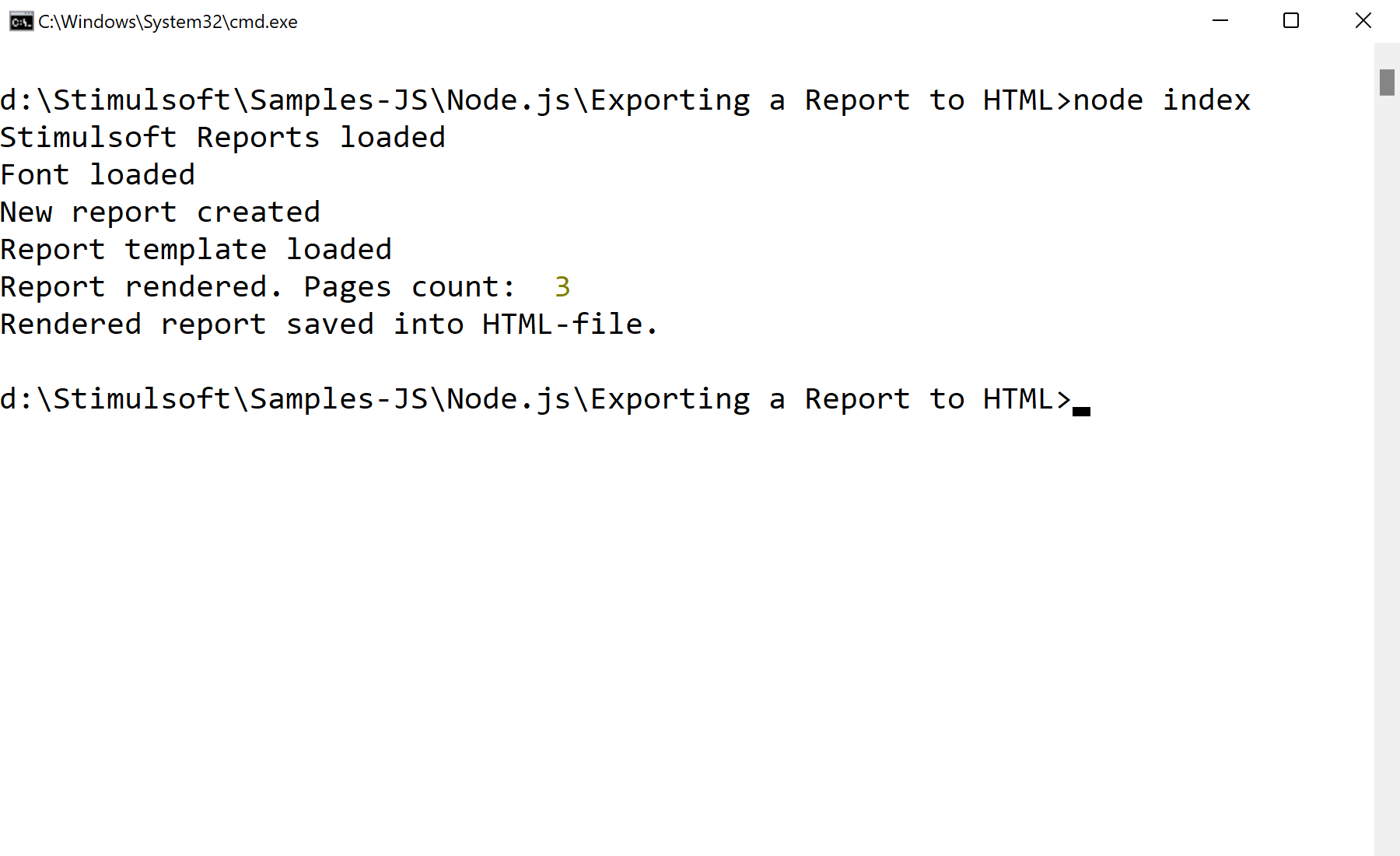This example illustrates loading of the report, data rendering and exporting the result to the HTML-file.
Installation and running Use npm to install requred modules:
$ npm install
Run Sample:
$ npm start
Step by step
Stimulsoft Reports.JS module loading:
var Stimulsoft = require('stimulsoft-reports-js');
Creating new report:
var report = new Stimulsoft.Report.StiReport();
Loading sample report template:
report.loadFile("SimpleList.mrt");
Renreding, saving and exporting report:
report.renderAsync(() => {
// Export to HTML
var htmlString = report.exportDocument(Stimulsoft.Report.StiExportFormat.Html);
// File System module
var fs = require('fs');
// Saving string with rendered report in HTML into a file
fs.writeFileSync('./SimpleList.html', htmlString);
});
Auf dem Screenshot unten Sie können das Ergebnis des Beispiel-Codes ansehen:
